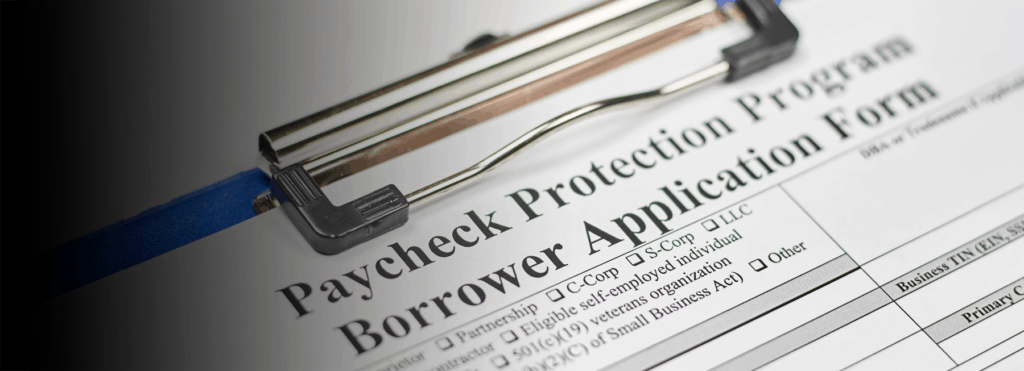The Paycheck Protection Program (PPP) was a small business lending program created by Congress in 2020 to provide loans to save businesses from the economic impacts of the COVID-19 pandemic.
There were two characteristics of this program that made it unique. First, a PPP loan could convert to a forgivable grant if the business spent the money on specific things, such as salaries for employees. Second, financial institutions did not use business or personal credit scores to determine access to credit.
Credit scores have traditionally been viewed as one of the major barriers to credit. We know that credit scores play a significant role in qualifying for a mortgage or a credit card in the consumer credit arena.
The removal of the credit score requirement for PPP loans may have revealed another barrier to credit: the structure of a business. Business structure was the first question asked on the PPP application. While it is unclear how lenders used this information, a survey of small business owners conducted by the National Community Reinvestment Coalition (NCRC) found a significant correlation with the responses and who inquired about or received a PPP loan.
NCRC surveyed US small business owners who employed 500 people or less and had obtained a credit product with an outstanding balance before March 1, 2020, or had a commercial rental space. The survey focused on entrepreneurs in nine Metropolitan Statistical Areas (MSAs): Los Angeles, Atlanta, New York City, Chicago, Houston, Miami, Detroit, Seattle and Washington, DC. There were 984 total responses, and the final sample size after scrubbing the data was 938 responses.
The survey found significant differences in who received and inquired about PPP loans. Entrepreneurs with businesses structured as LLCs were significantly more likely to inquire about PPP loans than all other business structures, and those with an LLC, S or C corporation were significantly more likely to receive PPP loans than those with a sole or joint proprietorship or a partnership business structure. There were no significant differences among the different business structures in terms of applying for PPP loans.
The survey didn’t reveal what exactly caused the differences, but the findings showed that the structure of a business played a role in access to PPP loans, and it raises the question of whether structure is in general an explicit or implicit barrier to credit.
Or, the PPP survey results may simply show that more business owners were more aggressive about seeking PPP loans, and more successful at acquiring them. Some business structures may be considered more “sophisticated” as they require an attorney and accountant to set them up. The level of sophistication of a structure refers to the time and energy to create, maintain and properly manage the legal aspects of the business structure.
The survey also measured products that small businesses utilized before the pandemic. The data revealed that different business structures were more likely to have different types of credit products.
- The more sophisticated business structures, S & C Corporations and LLCs, were significantly more likely to utilize business credit cards than Partnerships and Sole/Joint Proprietorships.
- LLC’s and Sole/Joint Proprietorships were significantly more likely to have an SBA loan product compared to S & C Corporations and Partnerships.
- S & C Corporations and Sole/Joint Proprietorships were significantly more likely to utilize a business line of credit before the pandemic than Partnerships and LLCs.
Previous research by NCRC that focused on racial and gender differences in small business lending also hinted at business structure as a possible barrier to credit.
Prior to the COVID-19 pandemic, NCRC conducted 100 small business pre-application matched-pair tests in the Atlanta MSA. All of the tests were controlled by race and split by sex. Thus, half of the tests were conducted by White/Black male testers and half by White/Black female testers. All the businesses had the same business structure. In this round of testing, we found that White men were asked about how their business was registered significantly less often than White women, Black men or Black women. There was no significant difference in the rate of inquiry of this question between White women, Black men or Black women.
Why were only the women and Black men, all members of protected groups, asked this question more often? Why in Atlanta were fewer White men asked about the structure of their businesses? Is this difference the same across all markets? Is structure being used as a factor for loan approvals, or a filter for who is even considered for a loan? In a non-testing environment, if an applicant answers the structure question correctly, do they move forward in their pursuit of credit? What is the correct answer?
These questions require further research. But the PPP survey data demonstrates that structure is important. More research is required to understand the interconnectedness between structure and access.
One way to better understand this role would be to include business structure in national small business loan data. On September 1, 2021, the Consumer Financial Protection Bureau (CFPB) released their proposed rule on small business data collection. This proposed rule is the implementation of Section 1071 of the Dodd-Frank Wall Street Reform and Consumer Protection Act of 2010, which required lenders to report and the government to release to the public small business lending data. Section 1071 has required data points but also allows the CFPB to request additional data points. One of these additional data points should be business structure.
Featured image: ©golibtolibov



